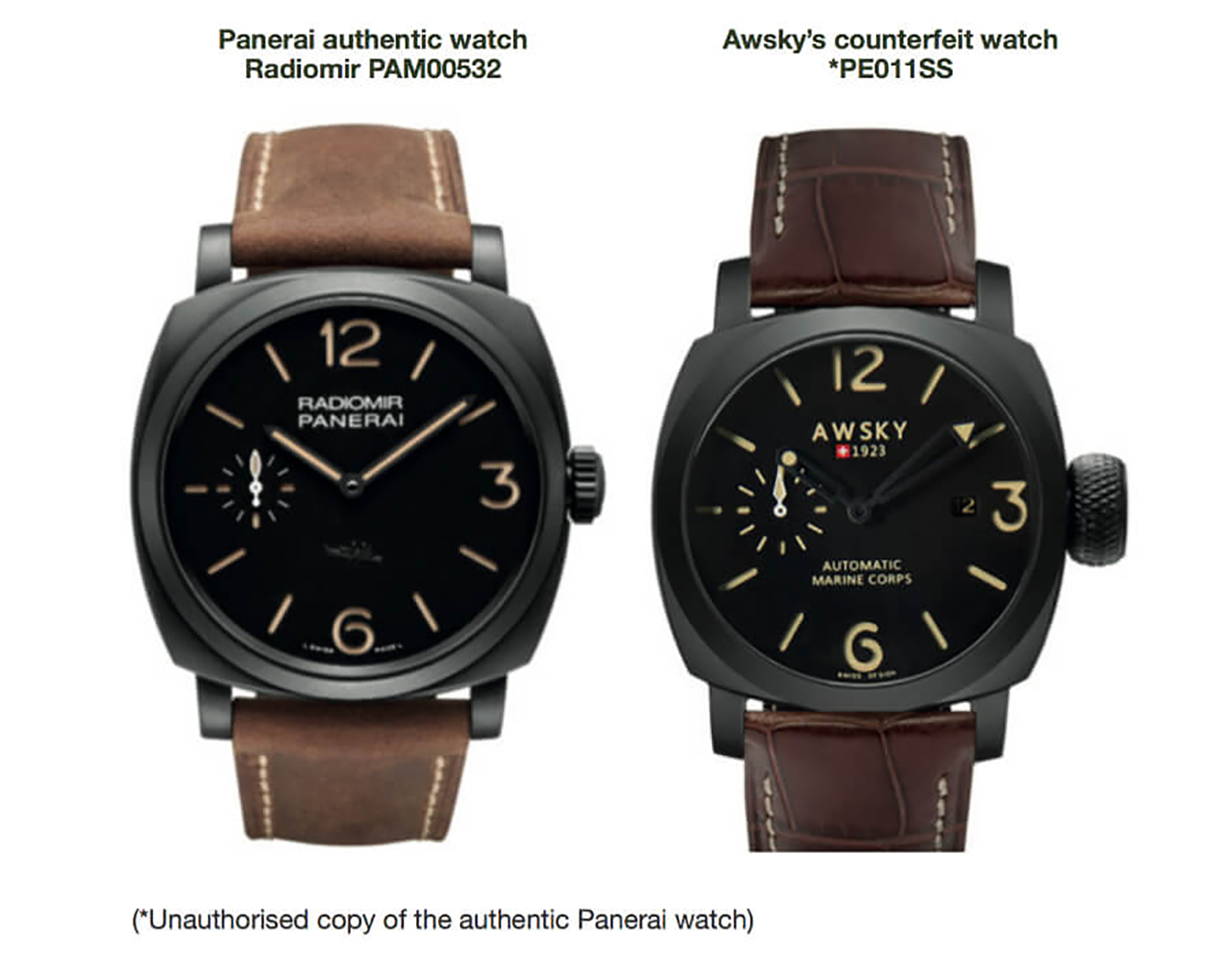
Italian/Swiss watchmaker Panerai recently announced it had earned a “favorable decision” in a major intellectual property case against Chinese manufacturer Awsky regarding the sale of counterfeit Panerai timepieces. The court decision, handed down by Guangdong Shenzhen Luohu District People’s Court in China on October 12, 2019, and finalized April 13, 2020, has demanded an immediate halt to all sales of infringing timepieces along with a sizeable financial compensation to Panerai. Awsky has been one of the most flagrant offenders in the Panerai counterfeit space, producing 48 separate models infringing on Panerai’s marks and distributing them through at least 16 different online sales platforms. Information exists to suggest that this is not the first time the defendant has engaged in anti-competitive behavior with Panerai prior to the facts of the current suit. This is seen as a big win for watch brands who rarely have many resources in stopping copycats and counterfeiters in China, where many of the watches are produced. The case outcome is likely rather narrow, not setting a great precedent that would materially help other brands from saving time and court effort in stopping future offenders. It does, however, show that the courts in China are by no means deaf to the commercial problems caused by unfair businesses practices all the way to flat-out intellectual property theft.
Counterfeit luxury watches are not a new phenomenon, and this legal decision in Panerai’s favor is the latest in a line of copyright cases by Swiss brands stretching back for many years. The latest decision against Awsky, however, stands out for several reasons. First, there is the origin of the court’s ruling to consider. China is a nation with notoriously lax standards when it comes to international copyright laws, so much so that entire industries in China have been built up around the production of not just imitations of luxury watches, but high fashion, toys, appliances, and even entire cars. The fact that a Chinese court has ruled against a manufacturer in China so harshly, even after multiple offenses, could potentially be the sign of a sea change in the way international copyright law is enforced in China. More so, this is not a case where all the infringing behavior involves mere trademark infringement, i.e., copying the logo. In this instance, the entire watch and theme of the brand are, in some senses, protected.

Many of the Awsky designs involved in the court decision might not be called counterfeits by the strictest definition of the word because they are not exact copies include protected trademarks (logos). Not only are the watches not labeled as Panerai products, with a clearly visible Awsky brand name, but many of the designs are not exact recreations of existing Panerai products. One of the most vibrant examples of this involves an Awsky model judged as a counterfeit of the black cased Panerai Radiomir PAM00532. While this Awsky watch clearly copies certain aspects of the Radiomir’s design, including the blacked-out cushion case, lumed sandwich dial, and straight lugs, there are several immediately recognizable differences between the two pieces. The Awsky’s crown is roughly double the size of the Panerai’s with a drastically different shape, the handset is a skeleton set copied from the Omega Seamaster Professional rather than any Panerai product, and the Awsky features a 3 o’clock date window that has no counterpart on the Panerai.
None of this is to say what Awsky was doing is not ethically reprehensible, but it leads to questions about just how effective the precedent set here will be. Many brands, some considered far more scrupulous than a marque like Awsky, often use elements of more famous watch designs in original models. For example, a large portion of the dive watch market utilizes case designs that could, in theory, be called copies or imitations of the Rolex Oyster case, and many similar examples of concept reuse exist throughout the industry. It seems unlikely that this court decision will completely erase this practice.
The decision of the Chinese courts should probably be seen as evidence that companies whose entire practice is meant to ride on the good and demand created by another company are not lawful. Awsky may have tried to curb strict trademark infringement but they still engaged in too much behavior that makes their brand, marketing, and sales feel too much like that of Panerai for the court to deem their business practices innocent and non-infringing. The result for other brands is that only when copycats are engaged in ongoing and rampant copycat-style business practices will the court step in to shut down the competitor. It is not believed that this court result will put a significant damper on illegal timepiece counterfeiting activity. More so, Panerai has a legal obligation to assert and attempt to protect its claimed intellectual property rights. This is because, in many instances, trademark intellectual property rights can be lost or genericized if the original rights owners do not try to protect them.
While this legal decision represents a step forward for Panerai, and a step against the rampancy of Chinese counterfeit manufacturing, the full repercussions of this legal decision will emerge over time. aBlogtoWatch will continue to monitor this developing story and report on any major updates. For more information, please visit Panerai’s website.
